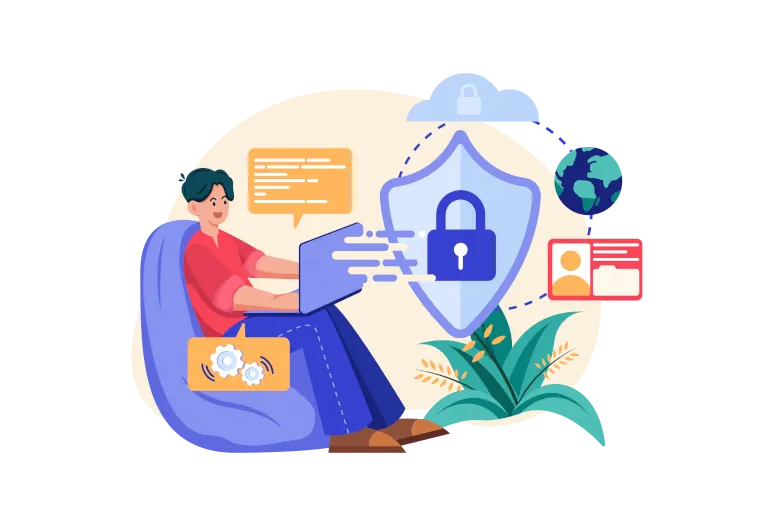
In the world of cyber security, there are two major threats that every computer user needs to be aware of: ransomware and phishing. Both malicious activities involve hackers attempting to gain access to a computer system or data, but the similarities stop there. While both can put organisation and individuals at risk, understanding the key differences between them is vital to protect yourself from financial losses, data breaches, and other serious consequences. Here, we’ll break down the primary differences between ransomware and phishing so you can protect your business and boost your cyber security.
What Is Ransomware?
Ransomware is a type of malicious software, or malware, that locks down a target computer’s system. It can be triggered by clicking on a malicious link or file, often sent through an email or text message. It encrypts all the data stored on the computer, making it inaccessible until the hacker’s demands are met. The attacker will usually request payment for a key to unlock the data.
What Is Phishing?
Phishing is an attempt to deceive a user into providing sensitive information such as usernames, passwords, and credit card numbers by masquerading as a trustworthy entity. It is most often carried out using email, text messages, or phone calls, and the attacker will often use social engineering techniques to try to fool the victim into revealing confidential information.
In some cases, phishing attacks will be used to transport malware into a computer system. For example, the attacker may include malicious links in an email that, when clicked, will download malware onto the target’s computer.

Main Differences
Though both threats have the same goal of gaining access to data and systems, there are several key differences, and it is important to be aware of these to ensure that you are not a victim of either one.
1. Method of Delivery
One of the key differences between ransomware and phishing is their method of delivery. Ransomware is typically delivered through malicious links or files, while phishing attacks are sent through emails, text messages, or phone calls designed to look like they’re coming from a legitimate source.
Essentially, ransomware attacks target the computer itself, while phishing attempts to access data by tricking the user into revealing confidential information. In some cases, hackers will use a combination of both methods to gain access.
2. Speed and Degree of Data Compromise
Another key difference between the two is the speed at which they can compromise data. Ransomware attacks lock down a system relatively quickly, while phishing attacks are more gradual and may take longer to reveal confidential information. Ransomware can cause more damage in a shorter period of time than phishing, as it encrypts all the data stored on the computer, making it inaccessible until payment is made. Phishing attacks, on the other hand, can take days or weeks to yield results – but it should be noted that results can be just as damaging.
3. Overall Goal
In many cases, the overall goal of the attack is different between ransomware and phishing. Ransomware attackers typically want money, while phishing attackers are usually looking to gain access to confidential information – this is one situation where data can be just as, if not more, valuable than cash.
4.Overall Impact
The impact of both ransomware and phishing can be far-reaching. Ransomware can cause organisation to lose access to important data, while phishing attacks can lead to a massive data breach. Both types of attacks can result in serious financial losses and reputational damage, so it is essential that everyone takes the necessary steps to protect their systems against these threats.
5. Frequency
Ransomware attacks are becoming more frequent due to the ease of access and relatively low cost. Phishing attacks, however, remain one of the most common hacking techniques, as they can be used to gain access to a variety of different types of data.
How to Reduce the Risk Of An Attack
As we have seen, both ransomware and phishing attacks can have serious consequences. To reduce the risk of an attack, it is important to be aware of the differences between the two and take steps to protect yourself. Some essentials include:
Be Sensible with Passwords
Make sure that your passwords are strong and not easy to guess. Use a combination of letters, numbers, and symbols to maximise security.
Be Wary of Emails
Be cautious when opening emails or clicking links, even if they appear legitimate. It is also important to be aware of phishing scams that target specific individuals or companies.
Keep All Software Up to Date
Take care to install updates to your operating system and other programs regularly, as these often contain important security patches.
Use Firewalls and Antivirus Software
Make sure that you have an up-to-date firewall and antivirus program installed on your computer to protect it from malicious software.
Use Multifactor Authentication
Multifactor authentication can also be a useful technique – this requires users to use two methods to log into an email or access a program – this usually involves a combination of a password and a code, and adds extra security.

Boost your cyber security with Freestyle TS
Phishing scams and ransomware attacks are rising, so now more than ever, your organisation should be taking the necessary precautions and protecting your employees. Book your free phishing test today and learn more about your cyber security vulnerabilities.
Alternatively, learn more about how you can defend your business assets, with our built in cyber security services.



